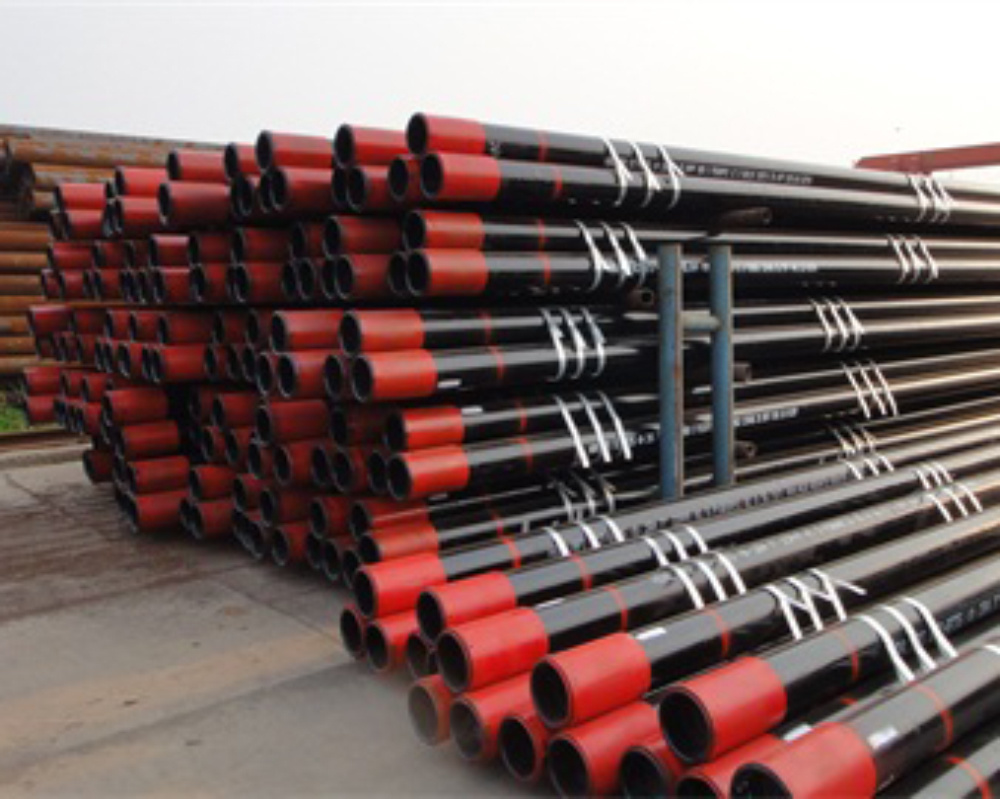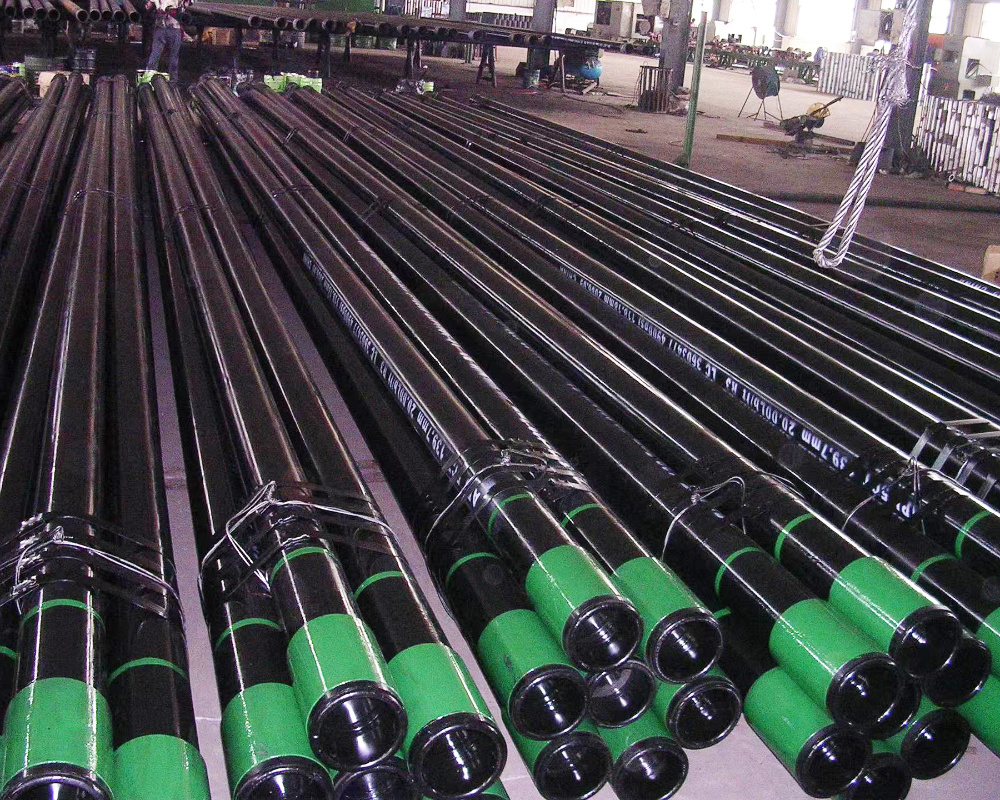Exploring the Benefits of Using Seamless Stainless Steel Tubing in Architecture
Exploring the Benefits of Using Seamless Stainless Steel Tubing in Architecture
Table of Contents
1. Introduction to Seamless Stainless Steel Tubing
2. Key Benefits of Seamless Stainless Steel Tubing
2.1 Unmatched Strength and Durability
2.2 Corrosion Resistance
2.3 Aesthetic Appeal
2.4 Versatility in Design
3. Applicat
Exploring the Benefits of Using Seamless Stainless Steel Tubing in Architecture
Table of Contents
- 1. Introduction to Seamless Stainless Steel Tubing
- 2. Key Benefits of Seamless Stainless Steel Tubing
- 2.1 Unmatched Strength and Durability
- 2.2 Corrosion Resistance
- 2.3 Aesthetic Appeal
- 2.4 Versatility in Design
- 3. Applications of Seamless Stainless Steel Tubing in Architecture
- 4. Maintenance Considerations
- 5. Environmental Impact and Sustainability
- 6. Cost Implications and Economic Benefits
- 7. The Future of Seamless Stainless Steel Tubing in Architecture
- 8. Frequently Asked Questions
- 9. Conclusion
1. Introduction to Seamless Stainless Steel Tubing
Seamless stainless steel tubing has emerged as a preferred choice in modern architectural design. This innovative material is manufactured without seams or welds, providing a smooth and continuous structure that enhances both functionality and aesthetics. The absence of seams not only improves the strength of the tubing but also reduces the risk of leaks and failures, making it ideal for a wide range of architectural applications.
2. Key Benefits of Seamless Stainless Steel Tubing
2.1 Unmatched Strength and Durability
One of the primary advantages of seamless stainless steel tubing is its **unmatched strength and durability**. Unlike welded tubing, which can be weak at the joints, seamless tubing provides a continuous structure that can withstand substantial pressure and stress. This robustness makes it an excellent choice for load-bearing applications, ensuring longevity and reliability in architectural projects.
2.2 Corrosion Resistance
Seamless stainless steel is inherently resistant to corrosion, thanks to its alloy composition, which includes chromium. This resistance is particularly beneficial in architectural applications where exposure to the elements is a concern. Buildings and structures utilizing seamless stainless steel tubing maintain their integrity and appearance for decades, reducing the need for frequent repairs or replacements.
2.3 Aesthetic Appeal
In addition to its functional benefits, seamless stainless steel tubing offers significant **aesthetic appeal**. The sleek and modern look of stainless steel can enhance the overall design of a building, providing a contemporary touch that complements various architectural styles. Whether used in railings, frames, or decorative elements, seamless tubing adds a sophisticated finish that can elevate any project.
2.4 Versatility in Design
The **versatility of seamless stainless steel tubing** is another compelling reason for its popularity in architecture. It can be easily fabricated into various shapes and sizes, allowing architects and designers to experiment with different forms and structures. This adaptability makes seamless tubing suitable for both residential and commercial projects, ranging from intricate sculptures to robust frameworks.
3. Applications of Seamless Stainless Steel Tubing in Architecture
Seamless stainless steel tubing is utilized in numerous architectural applications, including:
- **Structural Frameworks:** Providing robust support for buildings and structures.
- **Railings and Handrails:** Offering safety without compromising on aesthetics.
- **Decorative Elements:** Enhancing visual appeal in facades and interior designs.
- **Plumbing and HVAC Systems:** Ensuring reliable and leak-free installations.
- **Furniture Design:** Creating stylish and durable furniture pieces.
The ability to customize seamless stainless steel tubing for various applications makes it a go-to material for architects and builders alike.
4. Maintenance Considerations
While seamless stainless steel tubing requires minimal maintenance due to its corrosion-resistant properties, regular cleaning is essential to maintain its shine and appearance. Simple maintenance practices can include:
- Periodically washing surfaces with mild soap and water.
- Using stainless steel cleaners to remove stains or fingerprints.
- Inspecting for any signs of wear, especially in high-traffic areas.
Implementing these maintenance steps can significantly extend the lifespan and aesthetics of seamless stainless steel structures.
5. Environmental Impact and Sustainability
In an era increasingly focused on sustainability, seamless stainless steel tubing stands out for its **environmental advantages**. Stainless steel is 100% recyclable, meaning that structures built with this material can be repurposed at the end of their lifecycle. Additionally, the durability of seamless tubing reduces the frequency of replacements, minimizing waste and resource consumption over time.
Incorporating seamless stainless steel into architectural projects aligns with eco-friendly practices, making it an attractive option for environmentally conscious builders and designers.
6. Cost Implications and Economic Benefits
While the initial cost of seamless stainless steel tubing may be higher than other materials, the long-term **economic benefits** are significant. The durability and low maintenance requirements translate to reduced costs over the lifecycle of a building. Furthermore, the aesthetic appeal of stainless steel can enhance property values, making it a wise investment for developers and homeowners alike.
When budgeting for architectural projects, considering the total cost of ownership can illuminate the true value of using seamless stainless steel tubing.
7. The Future of Seamless Stainless Steel Tubing in Architecture
As architectural trends continue to evolve, the **future of seamless stainless steel tubing** appears bright. With ongoing innovations in manufacturing processes and design applications, seamless tubing is poised to play a pivotal role in modern architecture. From green building initiatives to cutting-edge designs, seamless stainless steel will likely remain a staple in the industry, addressing the needs of architects and builders seeking sustainable, durable, and visually appealing materials.
8. Frequently Asked Questions
What is seamless stainless steel tubing?
Seamless stainless steel tubing is a type of tubing made from stainless steel that is manufactured without any seams or welds, resulting in a continuous and strong structure ideal for various applications.
What are the benefits of using seamless stainless steel tubing in architecture?
The primary benefits include unmatched strength and durability, corrosion resistance, aesthetic appeal, and versatility in design, making it a popular choice for many architectural projects.
How is seamless stainless steel tubing manufactured?
Seamless stainless steel tubing is produced by heating a solid billet and then piercing it to create a tube shape, followed by elongation and sizing processes that form the final product without any welds.
Is seamless stainless steel tubing environmentally friendly?
Yes, seamless stainless steel tubing is 100% recyclable and has a long lifespan, reducing the need for frequent replacements and contributing to sustainable building practices.
What maintenance is required for seamless stainless steel tubing?
Routine cleaning with mild soap and water, along with using stainless steel cleaners to remove stains, is recommended to maintain its appearance. Regular inspections for wear in high-traffic areas are also beneficial.
9. Conclusion
Seamless stainless steel tubing has revolutionized architectural design with its exceptional strength, durability, and aesthetic appeal. As a versatile and environmentally friendly material, it meets the demands of modern architecture while also providing economic benefits over time. By incorporating seamless tubing into their projects, architects and builders can create structures that are not only functional but also visually stunning. As we look to the future, the continued evolution of seamless stainless steel tubing promises to shape the landscape of architecture for years to come. Embracing this innovative material can lead to sustainable, beautiful, and enduring designs that stand the test of time.
TAG:
Related Posts
Understanding Carbon Steel Seamless Pipes: Essential Insights for Construction Professionals
Carbon steel seamless pipes are an integral component in the construction and decorative materials industry, particularly in the realm of building pipes. These pipes are manufactured without seams, which makes them highly durable and reliable for various applications. Understanding their properties, advantages, and applications can greatly enhance decision-making for professionals in the field.
On









